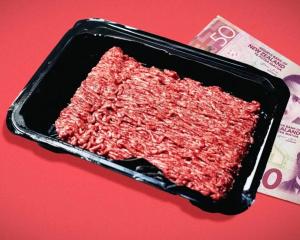
A herd of 37 Hereford steers sold for $7.27 per kg at the Castlerock Winter Cattle Sale last month.
Vendor James Hore, of Nokomai Station in Northern Southland, said it was the most he had been paid per kg for steers.
Another two lots of his heavier steers at the sale fetched higher prices per head.
"It was a good cattle sale. It paid my shearing bill."
He was not running any more cattle to make the most of a buoyant beef market.
"I can’t have any more cows or they would be falling off the hill."
At the Balclutha Cattle Sale last month, a dozen Charollais cross steers sold for $7.20 per kg and 14 Angus steers sold for $7.00 per kg.
RaboResearch food and agribusiness senior animal protein analyst Jen Corkran said global cattle prices continue to rise due to production volumes contracting in most major beef-producing regions.
Rabobank’s latest global beef quarterly report shows reductions in production volumes in Europe, New Zealand, Brazil and the United States, contributing to a fall in global beef production of 2% for the first half of this year.
Australia and China bucked the trend, recording beef production increases of 10% and 4% respectively for the first half of the year.
The rising beef production in Australia was not enough to bridge a lack of global supply, she said.
Global beef production was expected to reduce by 3% this year.
Lower global production helped generate stronger demand for southern hemisphere beef suppliers.
"We’re continuing to see this strong demand flow through to cattle prices."
After a stable start to the year, New Zealand’s beef production in the second quarter dropped 16.6% year-on-year to 177,000 metric tons.
The decline aligns with expectations, given the limited cattle availability across the country, Ms Corkran said.
New Zealand Meat Board data shows slightly more than 700,000 cattle were slaughtered in the second quarter of this year compared to more than 840,000 cattle slaughtered for the same period last year.
The breakdown reveals a 14% drop in bull beef, a 15% decline in cull cow numbers, and a 20% reduction in steer slaughter, Ms Corkran said
Beef slaughter numbers for the third quarter of this year were forecast to reach nearly 118,000tonnes, a fall of up to 5% year-on-year, she said.
New Zealand was expected to process fewer bobby calves this year, which would increase beef production in two years’ time.
Up to August 9, about 100,000 extra calves from the dairy industry were being reared compared to the same time last year.
Lower beef prices in 2023 had fewer bobby calves being reared and ready for slaughter this year.
In line with reduced production, New Zealand’s total beef export volume fell 11% year-on-year in the second quarter of 2025, falling to 129,670 tonnes.
However, export values for the quarter were up 7% to $1.432 billion, Ms Corkran said.
The United States remains New Zealand’s leading market, taking 40% of New Zealand’s beef.
A 15% tariff on New Zealand beef entering the United States was announced last month.
"This poses a competitive challenge, especially as Australian beef continues to face only a 10% tariff.
Strong demand from the US for New Zealand lean trimmings supported a positive outlook for farmgate beef prices in the second half of this year, she said.
She expects demand for beef to remain high in the US for the next three or four years.
"That gives us a bit of confidence that these prices are going to stay strong over that medium term."














